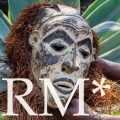
Remnants of an ancient Chinese silk manuscript, lost long ago, finally touched down at Beijing Capital International Airport on Sunday, ending nearly 80 years of overseas wandering.
The flight to Beijing followed a handover ceremony in the United States at the Chinese embassy in Washington, DC.
As the earliest Chinese silk texts discovered to date, and the only known ones from the Warring States Period (475-221 BC) unearthed in China, the manuscript was named after the Zidanku area of Changsha, Hunan province, from where it was stolen by grave robbers in 1942. It was then illegally taken to the US in 1946.
The parts of the three-volume manuscript that have been returned to China are Wuxing Ling and Gongshou Zhan, known by scholars as Volumes II and III, respectively. They are about taboos and auspicious practices in rituals and military actions.
Li Ling, a veteran archaeologist from Peking University who has studied the Zidanku manuscript for over 40 years, described the relics as China’s equivalent of the Dead Sea Scrolls, a collection of ancient, mostly Hebrew manuscripts first found in 1947.


